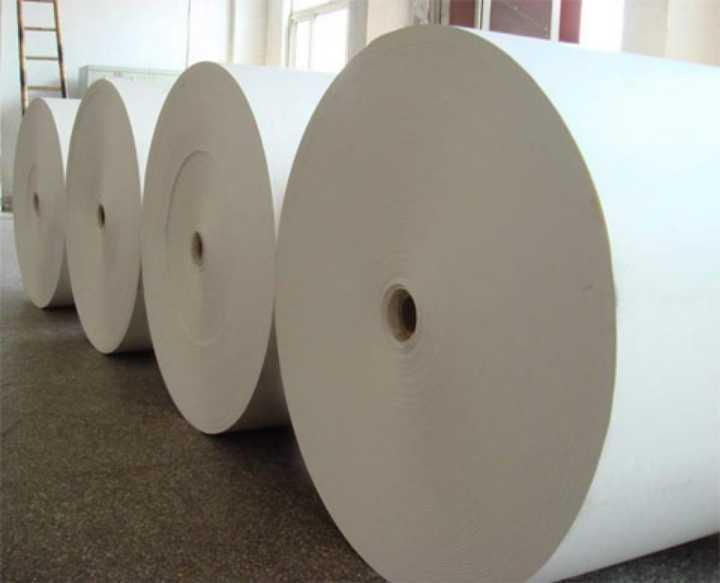Step-by-Step Guide to Folding Box Board Design
- ediconpaperproduct
- Jul 7
- 4 min read
Folding box board (FBB) is a key material in packaging, especially for consumer goods like cosmetics, pharmaceuticals, food, and electronics. Its unique layered construction—typically comprising mechanical pulp sandwiched between layers of chemical pulp—gives it strength, smoothness, and printability. Designing with folding box board isn’t just about making a container; it's about creating a functional, brand-aligned experience that protects and sells the product.
Here’s a practical, step-by-step guide to designing folding box board packaging that works.
Step 1: Understand the Product Requirements
Before jumping into design software or mockups, you need a clear grasp of what the product demands. Consider:
Size and weight of the product
Fragility (does it need extra reinforcement or protection?)
Storage and shelf life
Retail environment (shelf display, stacking, etc.)
For example, heavier products may require a thicker grade or a backing material like Duplex Paper Board to maintain structure without warping.
Step 2: Choose the Right Material
Folding box board comes in various grades and finishes. Material choice affects strength, printability, and feel. Popular types include:
GC1 / GC2: Coated on one or both sides for premium print finishes.
GZ: For high stiffness requirements.
Coated Duplex Board: Ideal for offset printing with a grey or white back.
For eco-conscious brands, recycled options or materials with sustainable certification (like FSC) may be non-negotiable. Duplex Kraft Board is another alternative when looking for balance between durability and eco-value.
Step 3: Define the Box Style
There are many folding box styles, including:
Straight tuck end (both flaps fold in the same direction)
Reverse tuck end (top and bottom flaps fold in opposite directions)
Crash lock bottom (for heavier products)
Sleeve or slipcase (for premium unboxing experience)
Choose based on product weight, unboxing ease, and shipping needs. Sketch or use box style templates (die lines) from packaging vendors to get precise dimensions.
Step 4: Create the Die Line
A die line is a 2D template of the box showing where it folds, cuts, and glues. It’s the technical map your design must follow. Here’s how to handle it:
Start with the flat size (length + width + depth + flaps).
Add bleed areas (usually 3mm) for printing that runs to the edge.
Mark fold lines (dotted or dashed), cut lines (solid), and glue areas (highlighted).
Include registration marks and color bars for printer alignment.
Most packaging printers offer downloadable die line templates in formats compatible with Adobe Illustrator or ArtiosCAD.
Step 5: Design the Visuals
Now the creative work begins. Keep the following in mind:
Branding: Use consistent colors, logos, and typefaces.
Hierarchy: Make sure the most important info (product name, key features, barcode, etc.) stands out.
Readability: Keep fonts legible, especially for ingredients or legal text.
Image resolution: Use 300 DPI images for print clarity.
Sustainability symbols: If your packaging uses eco-friendly materials, include relevant icons or certifications.
Test different layouts within the die line and double-check that nothing lands on a fold or cut line unless it’s intentional.
Step 6: Add Finishing Touches
Finishes can elevate your packaging from basic to premium. Popular options include:
UV coating for a high-gloss effect
Matte lamination for a smooth, muted look
Embossing/Debossing for texture
Foil stamping for luxury appeal
Spot varnish to highlight specific areas
These features affect cost, turnaround, and recyclability. Be selective and strategic. For example, a Coated Duplex Board with a foil stamp can look high-end while staying affordable.
Step 7: Create a Prototype
Before committing to a full print run:
Make a physical prototype (mockup) using your selected board.
Evaluate how it folds, holds weight, and handles wear.
Test printing on the actual board stock to confirm colors and clarity.
Check glue tabs, lock mechanisms, and how it opens.
This step avoids costly mistakes later. It also helps catch issues with alignment, misprints, or sizing that aren’t obvious on screen.
Step 8: Collaborate with the Printer
Once the design is finalized and prototyped, share the package with your print partner:
Send packaging-ready PDF with layers flattened and fonts outlined.
Confirm color modes are in CMYK.
Provide pantone references if color accuracy is critical.
Discuss volume, lead time, and minimum order quantities (MOQs).
Choose a printer with experience in FBB packaging. Ask for printed proofs if budget and time allow.
Step 9: Plan for Fulfillment and Logistics
Even the best-designed box fails if it doesn’t ship well. Before mass production:
Test how the boxes pack flat and fold at the fulfillment center.
Assess how many fit into your master cartons and pallets.
Make sure boxes survive drops, stacking, and moisture during shipping.
This is where Duplex Kraft Board can be useful—it adds durability without excessive weight or cost.
Step 10: Iterate and Improve
Design isn’t a one-and-done process. After launch:
Collect customer feedback on usability and unboxing experience.
Track damage rates in shipping.
Note any printing inconsistencies or packaging waste.
Use this data to refine future runs. Sometimes a small tweak in board thickness or flap length can fix recurring issues.
Final Thoughts
Folding box board design is a balance of form, function, and manufacturability. It requires attention to material, style, technical layout, and creative polish. Smart choices—like selecting between Coated Duplex Board and Duplex Kraft Board—can directly impact cost, print quality, and environmental footprint.
The difference between a good box and a great one often comes down to planning and precision. With this step-by-step process, you can design packaging that protects the product, aligns with brand goals, and looks sharp on the shelf.











Comments